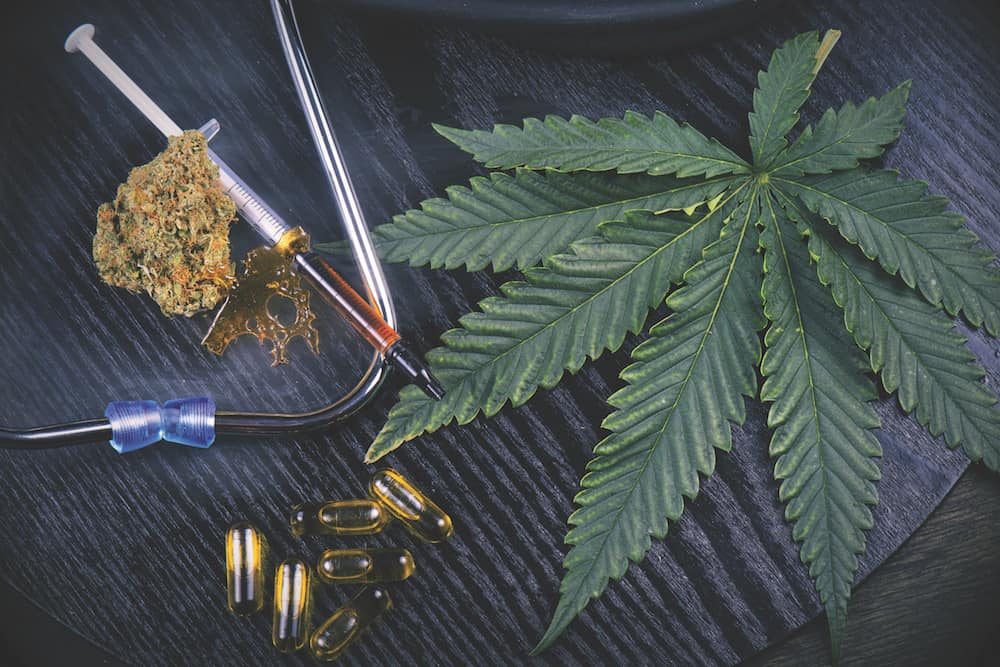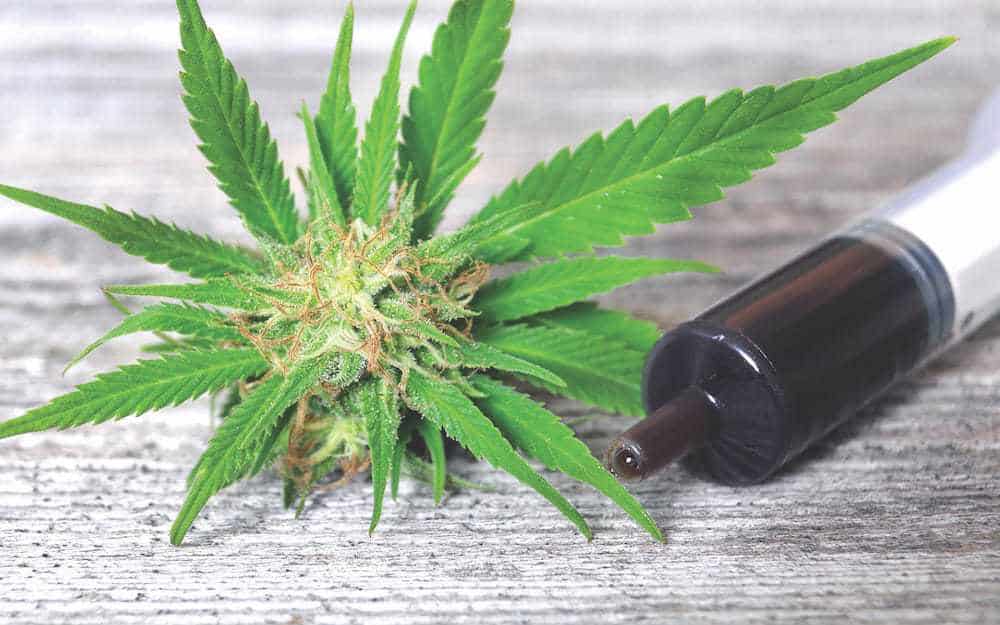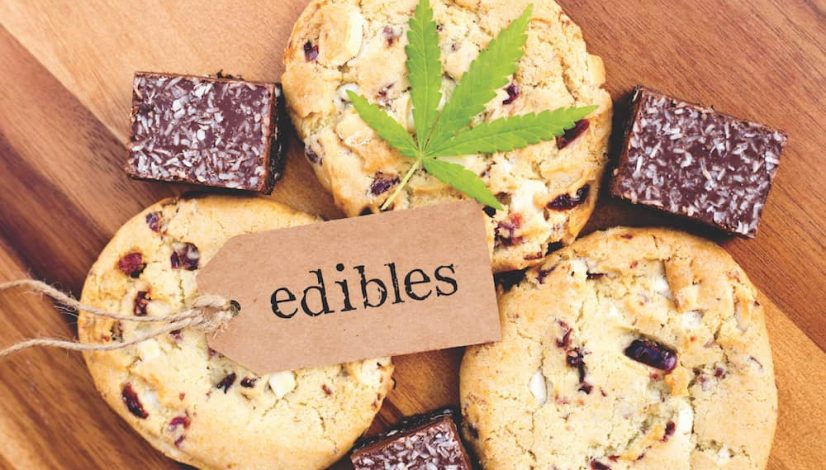Concentrated Cannabis Part III: Looking Beyond the Smoke
Welcome to Part III of our “Concentrated Cannabis” series. In our first installment, we examined the history of concentrates as well as the different types of extracts and how they are produced. In Part II, we discussed the latest techniques for extraction and how concentrates affect the body and mind. Now, in the latest installment of the series, we examine the benefits of cannabis concentrates that are not smoked or vaped.
By now, most readers are aware of how cannabis concentrates are consumed—and are familiar with the ensuing sense of euphoria and well-being. Whether dabbed on a nail, sprinkled on top of a bowl of flowers or vaped in an e-pen, there’s nothing quite like exhaling the smoke from a tasty, terp-filled dab. Thanks to different combinations of terpenes (the essential oils lending cannabis its various aromas and flavors) and cannabinoids, extractions of different strains can be used to achieve an array of psychoactive results. Consumers find that certain strains bring about feelings of creativity, motivation, energy, relaxation, pain reduction and appetite stimulation.
The truth is that dabs and different types of hash are just the tip of the iceberg for concentrates. There’s a whole world of applications for cannabis extracts that don’t require smoking or dabbing. These concentrates are being used to treat a number of illnesses and have proven instrumental in improving quality of life for countless patients—and, in many cases, saving lives.

Edibles
While concentrates have become a major part of the marijuana marketplace over the past few years, they have also been instrumental in the extraordinary evolution of edibles. As the edibles industry has made incredible strides, the days of pot brownies filled with chewy mouthfuls of flower and ripe with the strong taste of cannabis are long past. Previously, most edibles were relegated to the ranks of sugary, candylike products. But with today’s more refined consumers, the common medicated Rice Krispies treat no longer suffices. Consider progressive products like Om Edibles’ vegan, gluten-free and paleo-friendly cinnamon-maple Treehugger clusters, or the spiced apple cider from Ganja Grindz and the Clear, or Tahoe Herbal Company’s Kannabucha, a fermented probiotic tea. These are just a few examples of out-of-the-box creations entered in past Cannabis Cups that highlight how concentrated cannabis has elevated the edibles game. But how do these companies do it?
Traditionally, cannabutter was the most widely used base in edibles. Created by slowly simmering your flowers in butter to decarboxylate THC-A into its coveted, psychoactive form of THC, you get a potent batch of medicated butter that can be used to make almost anything. Unfortunately, this also results in a product that usually carries a strong aftertaste of cannabis flowers, making it less appealing to the palate for many.
However, by using distillate or crystalline—nearly pure THC-A devoid of any terpenes or chlorophyll found in flowers—edibles makers can achieve the psychoactive effect of our favorite plant without the unpleasant taste*. While terpenes are an important part of the experience when smoking or vaporizing, they play no real role in edibles. THC enters the stomach and then the liver, which converts the THC into 11-hydroxy-THC, which is also highly psychoactive. This is why the experience of eating cannabis is profoundly different than smoking it, as it literally becomes a different drug. Contrary to what some companies advertise, whether the edibles are made from sativa or indica makes no real difference in the experience of the high when consuming them.
The lack of terpenes and chlorophyll in distillate or crystalline allows the other ingredients in edibles to come to the forefront and eliminates the need to find ways to mask the cannabis aftertaste. Along with the use of such extracts, edibles makers are also moving away from butter, using healthier fats. Using an ingredient high in fat, like coconut oil or avocado oil, gives THC something to bind to and increases its bioavailability. This allows the consumer to get more from their medicine.
In addition to improving flavor, distillate and crystalline assist in the accuracy and potency of edibles dosing. Using extracts that are nearly 100 percent THC allows the maker to create edibles that have a more consistent dosage.

Capsules and Tinctures
For some people, THC-infused edibles are not a useful way to ingest their medicine, especially if they are following a regimen that requires them to consume throughout the day to maintain a specific dosage (who wants to be scarfing down Rice Krispies treats six times a day?). For these patients, capsules are a very effective alternative. By simply adding a teaspoon of soy/sunflower lecithin to your THC base and then using an oral syringe to fill gel caps once its cooled off, you have a powerful and portable medication that can be easily replicated.
Tinctures are also very valuable for those seeking ease of use with their concentrated cannabis. The medicinal effects of tinctures take less time to kick in than traditional edibles, and dosing can be very consistent. Having the option to decarb your material or not is also very helpful, as you can create something that is high in THC to help reduce pain or high in THC-A for its pure holistic and regenerative properties.
Decarbing your THC-A while it’s in the flower makes creating tinctures slightly easier and safer, especially when using a solvent such as alcohol as a base. Grind your dried flowers, spread them evenly on a baking sheet and put in the oven at 220°F for 90 minutes to convert your THC-A. Oftentimes, the flowers are then added to a jar of grain alcohol or grape spirits and left to steep for a few days or a couple of months. This allows the solvent to strip the cannabinoids from the plant material, resulting in a dark-green, THC-laden liquid that, when placed under the tongue, can enter the bloodstream in mere minutes. Adding some honey to the tincture can remove some of the bite that the alcohol adds. You can also avoid using alcohol by substituting vegetable glycerin to steep your flowers. While this makes for a healthier option, the steeping time can take much longer in the absence of a solvent. The longer the material steeps, the more potent the results. You can even choose to use a distillate or other form of concentrate in lieu of flowers, but keep in mind that consistent shaking and stirring to fully incorporate the oil into the body of the glycerin is required. Otherwise, the dosing can prove to be inconsistent within the body of the tincture.

Topicals
Topicals are one of the oldest forms of cannabis consumption, with their use dating back thousands of years in the form of poultices—ground-up plant material combined with other herbs and applied directly to wounds. Poultices were used to reduce swelling, and they acted as an antibacterial agent to prevent infections and aided in overall healing. Now one can find a large selection of topical creams, gels and salves that use cannabis extracts to combat rheumatoid arthritis, swelling, burns, cuts, skin maladies and even cancer.
Using cannabis that is both high in THC and CBD is effective when creating any cannabis medicine, thanks to the entourage effect. This is the theory that the presence of THC enhances the effect of CBD, much in the same way that THC enhances the effects of terpenes. Starting with the same coconut- or avocado-based medicated oil detailed in the sidebar, melt the mixture in a double boiler over low heat. Add a quarter cup beeswax to give the topical more body and then choose essential oils and herbs based on the maladies you’re targeting. Lavender, chamomile, peppermint, eucalyptus, cramp bark and lemongrass are some of the more popular choices, with each herb lending its specific properties to the THC’s entourage effect. One can include almond oil, emu oil, jojoba oil or shea butter to affect the creaminess and texture of the topical.

Phoenix Tears, RSO and the True Medicine
RSO (Rick Simpson Oil), more commonly known as Phoenix Tears, has been the (somewhat controversial) measure of the magical healing properties of concentrated cannabis. Created by Rick Simpson, this concentrate is extremely simple to create and has a bounty of anecdotal evidence. Targeting MS, pain, diabetes, arthritis, asthma, infections, inflammations, high blood pressure, depression and sleeping problems, RSO has gained the bulk of its notoriety from its alleged ability to rid people of cancer via ingestion, topical application or suppositories, depending on the location and type of cancer. While there are no scientific studies confirming RSO’s effectiveness in treating cancer, we must admit there’s a great deal of positive testimonials.
Visionary healer and medicine maker Eddie Funxta explains the process as “trying to put the most amount of cannabis in the jar as fast as possible.” He’s also used shamanic cacti (San Pedro), mushrooms, peyote and ayahuasca for healing. Working with Simpson, he learned how quality cannabis concentrates can heal the body and mind. Funxta began his healing quest after his brother contracted HIV. Funxta was able to provide a better quality of life for his brother through his battle with AIDS thanks to cannabis-concentrate oil. After his brother’s death, Funxta found his calling in providing medicine for countless HIV/AIDS patients, and he soon found he could help cancer patients as well.
Through his work with thousands of patients, Funxta learned that using quality cannabis flowers as opposed to sugar trim and lower-quality material resulted in medicine that provided better results. Utilizing indicas high in both THC and CBD resulted in greater efficacy. He has continued to this day to bring this medicine, which he calls Native Healing Oil (NHO), to the sick and infirm.
The dosage and use is fairly scalable depending on need. As the concentrate is so potent, the starting dose is the size of a quarter grain of rice, slowly increasing to prevent the patient from getting too zonked-out. It can take a patient up to six weeks to be able to tolerate a gram of RSO/NHO, which is generally the max strength recommended. Depending on the potency of the starting flower material, there can be 600-700 milligrams of THC per gram of oil.
The versatility of RSO/NHO is quite broad as well. Simpson used it on his own skin cancer as a topical grease, applying it to the affected area. When treating other ailments, the oil can be directed to the more immediate area via oral consumption or suppository caps.
While many patients swear by RSO/NHO, Funxta emphasizes the shortage of the material for those in need. He urges “growers, breeders and dispensaries to join our medicinal community in healing our sick. Amazing genetics already exist; it all doesn’t have to go to the recreational side.”
Removing prohibition’s stranglehold on cannabis could reveal a staggering number of medicinal, industrial and environmental breakthroughs. Some of these advances currently seem too magnificent to believe. The plant has the ability to outgrow trees to produce paper products with a lower environmental impact. The ease of manufacture and the performance of hempcrete provide a low-cost alternative for housing that requires less energy to heat and cool. Cannabis can be used to make lightweight, biodegradable materials that can replace many fossil-fuel-based plastics, which carry an enormous environmental cost as evidenced by islands of plastic found choking our oceans. Industrially, the cannabis plant can replace nearly 90 percent of all fossil-fuel-energy use! During its growth, the plant even produces enough oxygen to offset the carbon dioxide it will release when burned as a fuel, leaving almost no carbon footprint. You can just imagine the implications!
These benefits are of course in addition to the medical and adult-use aspects of cannabis, which enriches and improves quality of life. Replacing society’s dependence on opioids as painkillers can give patients their lives back. Cannabis concentrates hold incredible potential for cancer patients. CBD-rich concentrates can help those afflicted with epilepsy and seizures. The potential of cannabis concentrates is unrivaled, and we haven’t even begun to study, poke and prod the plant in earnest due to its classification as a Schedule I drug. The impending ripple effect of descheduling cannabis that lies before us is enormous beyond imagining, perhaps only rivaled by the impact the computer has had on humankind. The singular thing that stands in the way of unlocking Mother Nature’s seemingly never-ending bounty is the greed of humanity itself.
*Methods for creating distillate and crystalline can be found in “Concentrated Cannabis” Parts I & II in the April and November 2017 issues of High Times.

Extract Edibles
Here’s a reliable and easy method for making a healthier and more effective concentrated base for edibles. It serves as a versatile foundation that can be used in many ways. Instead of using a cup of ground cannabis, use 2-3 grams of distillate. Place in the oven at 220°F for 60-90 minutes in a container (oven-safe silicone works perfectly), allowing the material to decarboxylate. Next, combine the distillate with one cup of organic coconut oil. Slowly heat over a double boiler or in a slow cooker, making sure to keep the temperature well below 245°F, as higher temps can cook off valuable cannabinoids and degrade potency. Let the mixture simmer slowly for another 30 minutes, stirring occasionally. When cooled to room temperature, the coconut oil will solidify. You are now left with a potent, healthy base ready to accompany whatever dish you choose to create—from a medicated hollandaise sauce to a delicious shrimp scampi. To take things a step further, you can use crystalline THC, which will remove any trace of the taste of cannabis, allowing you to incorporate THC in the highest high cuisine.
This feature was published in the April 2018 issue of High Times magazine. Subscribe right here.
The post Concentrated Cannabis Part III: Looking Beyond the Smoke appeared first on High Times.


